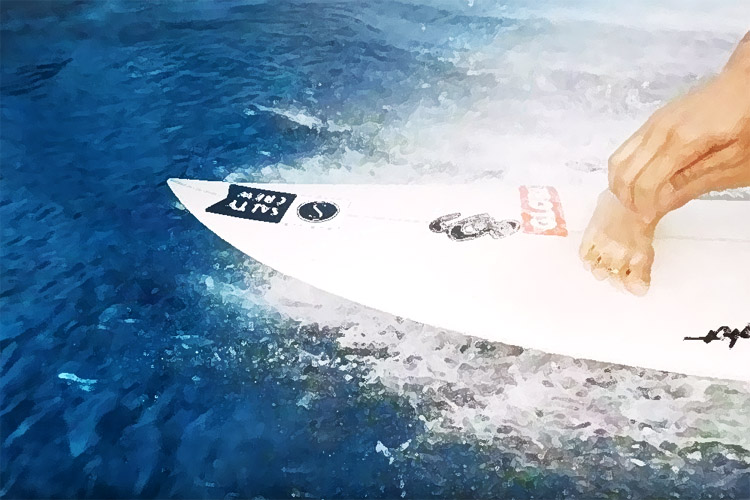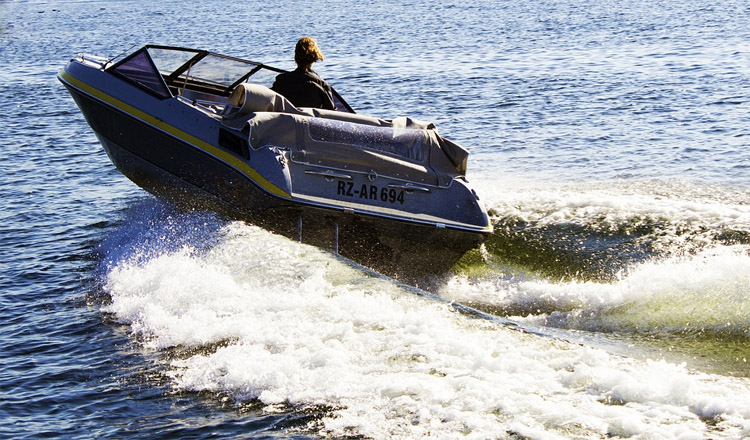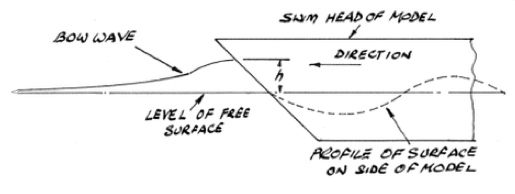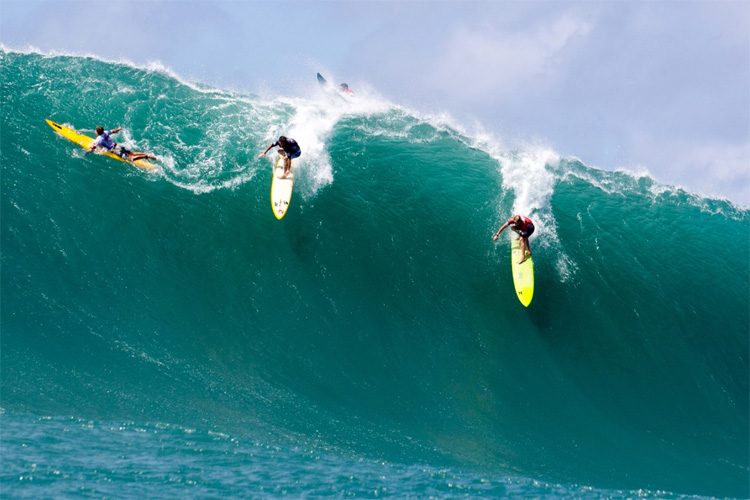Donn Ito, the man behind the blog "Quantum Surf Physics," reveals the secrets behind many unfinished rides.
Blame it on the surfer; blame it on the surfboard. There are many reasons why we fall off a surfboard. But understanding what causes surfboard's rocker to stick can reduce wipeouts.
Below is a sequence of Mark Foo's last ride. Note the spray shooting from under Mark's board. It is generating a wake after a free fall.
Mark struggles to maintain his balance but is pitched. Cold water was a big factor in Mark's demise.
Barrett Stoller, a chemist, researched hydrogen bonding in cold water. He found that cold water resists parting at high speeds due to the stronger hydrogen bond.
Casimir Pulaski, a cold water conditioning researcher, also discovered that warm water surfers have a lower tolerance for cold water.
The sympathetic nervous system (SNS) shuts down circulation to arms and legs to protect the body's organs.
It takes special conditioning to survive a two-wave hold down in cold temperatures.
Getting off a plane from Hawaii and jumping into the large surf, breaking in cold water, may be a burden on the cardiovascular system.
Surfers regularly riding waves in cold water are better prepared for a perilous situation.
Sion Milosky and Marc Ma are Hawaiian surfers who also may have also suffered from this effect.
Moving Through Space and Time
Physics is the study of matter moving through space and time. Movement through space generates waves. Our environment is filled with waves of various origins.
A few examples are sound waves, electric waves, radio waves, air waves, ocean waves, gravity waves, and many others.
Physics defines a wave as an oscillation moving through a medium, which transfers energy. The surfer's medium is water.
A vessel moves through the water by displacing water. Surfers do the same - when moving, they push water and create a wave or wake.
Energy is transferred from surfboards to water. Wake creation is called wave-making resistance.
Water resistance, working on a surfboard, generates these waves or wakes. A boat has a power source - manpower, wind, or engine.
To keep a boat moving, energy must be added continuously.
The energy lost in the transfer to water must be replaced, or the boat will stop moving. Surfing energy is generated by gravity.
When energy is depleted, the surfboard slows or stops. Generally, surfers cannot add more power.
The photo below is of a surfboard wake or bow wave. Surfers generate bow waves as they move. They usually cannot see this wave because it is under their boards.
Water contact takes place under the surfboard at the bow. The bow is under the nose rocker.

At slower speeds or with a gradual increase in speed, the board pushes water effortlessly.
The nose gradually rises above the water when the board planes. The bow wave disappears on planing, and only a trailing wake is produced.
Surfboard Evolution
Surfing has evolved. Surfers are riding larger waves, bigger than anything ridden in the past.
Speed increases with wave size. The larger the drop, the faster a surfer moves. Surfers are also leaving the wave and flying in the air.
With these changes in surfing, the modern flat bottom frequently slows on hard landings.
Modern surfing has added flight and free falls to surfing. A surfboard falls and stalls, hitting the water at high speeds.
The sudden high impact can cause the surfboard to stop. Many aerial maneuvers end with a flat landing and a stall.
The board impacts the wave bottom at high speed and stops on the water's surface. The landing is similar to a diver in a belly flop.
Both the diver and surfboard stop on the surface due to wave-making resistance. Waves or wakes not only radiate outward around the impact but also downward.
The downward force of wave-making resistance also stops the board in a pearl.
The pearl, where the nose of the board submerges underwater, generates a resistance wave under the board and underwater.
The tip, however, does not have to submerge for the board to stop.
In the following video, the surfboard pushes water creating a bow wave.
The bow wave is under the board and not visible, but it sprays water over the board, around the surfer's feet.
The spray is a sign of resistance and identifies a bow wave. There's fast-moving water moving up the wave.
The surfboard gets stuck in the water flow and stops. The tip is still barely visible.
The video shows the surfboard stopped on the surface. This indicates that the nose did not submerge. When the nose submerges, the board shoots up in the air.
This wipeout is identical to a pearl, as wave-making resistance stops the board in both cases.
Wave-making resistance is produced underwater. Here's a wipeout from Mavericks.
Rock that Nose
The biggest obstacle for a modern surfboard is its nose rocker. Nose rocker has diminishing returns. The more a board has, the higher its chance of slowing and stalling at high speeds.
Too little nose rocker will cause the board to submerge. The largest misconception in surfboard design is that flat is the fastest bottom.
The nose rocker works against speed in a flat bottom. Below, a bow wave forms under the rider's board and stops movement.
The rider cannot stay on due to the abrupt deceleration.
A flat bottom surfboard is not truly flat. The bottom is flat from rail to rail, but from nose to tail, the bottom curves.
The nose bend or nose rocker is critical to performance. It assists in keeping the tip from submerging.
However, it can hinder performance and cause a wipeout. This is sometimes overlooked. Wipeouts are often attributed to the wrong factors.
Wipeouts in small waves are not critical. They may cause injury, but rarely a serious one. In competition, wipeouts can cost valuable points and time.
Nose rocker varies from low in fish design to extreme in high-performance boards. Nose rocker has diminishing returns.
Increasing rocker exposes an exaggerated bow, which can stop a flat surfboard.
The largest factor working against nose rocker is drag. A high nose rocker with a flat bow pushes water ahead in the board's path.
Water moves forward before streaming around the board. Briefly, water accumulates in front of the board and may slow or stop movement. This accumulation is a bow wave.
The bow is what stops a board in a shallow pearl. Water flowing over the top and covering the nose of a surfboard is exerting low or no pressure.
Water flows over the nose in pearl, rotating in a vortex or rotor. It does not exert significant pressure unless the pearl is deep.
High pressure or drag is produced under the board by the flat bow, pushing water at the rocker bend. This is wave-making resistance, discussed earlier.
On a finite level, intermolecular bonding cohesively blocks a speeding flat surface. Hydrogen bonding holds water molecules together against fast-moving flat objects.
This is the same hydrodynamic force that supports a planing surfboard. Water can be parted with an alternative bottom shape.
Kinetic energy can be utilized to push water aside out of the board's path.
This is the old technology used by Tom Blake and Duke Kahanamoku. The more rocker a board has, the more it needs a shape that displaces water rapidly.
A vee or round bow directly displaces water out of the board’s path. Tom Blake's boards were very flat in their back half.
This is called a semi-displacement shape.
Modern surfboards can retain their present shapes going aft - only the bow needs to be modified to displace water efficiently.
Flat vs. Vee
The flat bottom is a proven design that has been around for decades. The flat bottom rides on the surface and needs smooth water to perform efficiently. Chop slows all surfboards; chop can stop a speeding flat bottom board.
At slower speeds and in smaller waves, the flat bottom excels. The flat bottom adds stability and reduces tipping at slower speeds. Modern vertical surfing has exposed the vulnerability of the flat bottom.
Surfers can keep the bow out of the water with their skills and control. Control is compromised at high speeds and when the board leaves the wave in the air. A wipeout in small surf is inconsequential.
In competition, a wipeout has larger negative impacts. Aerial surfing with hard landings is completed in smaller waves at slower speeds. Surfers can make the transition at lower speeds.
In large waves, speeds are higher; a successful transition is often not possible due to cohesion. Speed not only increases the force of impact but also increases wave-making resistance.
Here's Sebastian Zietz in the Pipe Masters. He makes a beautiful cutback and gets stuck. He normally completes maneuvers like these.
Commentators attribute the wipeout to sticking a rail. This is correct, but before the rail sticks, the rocker decelerates the board.
The tip is visible until the rail submerges. The drag is generated under the bow.
A bow wave is generated. Spray from the bow wave shoots over the nose. A large ball of foam from the bow wave covers the nose.
The bow generates drag by pushing water, ending the ride.
All surfboards generate bow waves, which restricts speed. A flat bottom surfboard uniquely produces a bow wave directly ahead in its own path.
Water is first pushed forward before it flows around the board.
In a free fall, the flat bottom encounters water rapidly moving up a wave. The flat surface enters this water flow and acts as a dam.
The flat surface blocks the flow of fast-streaming water.
This amplifies wave-making resistance and consumes all kinetic energy. The flat bottom does not push water aside fast enough.


A flat bottom boat pushes wake directly ahead in its path. The boat has enough power to continue moving.
A flat bottom surfboard does the same thing. A surfer cannot add power and decelerates abruptly, often catapulting over the nose.
Surfboard shapes can change water flow. Water can be directed immediately around the board or under the board, reducing resistance.
The bow wave can either move out of the board's path or through the board.
Concaves direct water under the board. Concaves are limited in the amount of water they can rapidly divert.
A thin surfboard nose and bow may not allow enough clearance or draft for water to rapidly pass under.
Not all water gets through; some pushes against the board bottom, creating drag and lift. Nose rider shapes use this to support the rider.
Alternatively, the bow wave can be directed out of the board's path with a different bow shape.
Ancient technology used round or vee bottoms on ships and voyaging canoes to cross oceans.
Old round bottom surfboard shapes of the 1960s successfully pushed water aside on boards with little rocker.
The round bottom was called "belly" and was very common in this era.
In the 1990s, Maurice Cole used forward vee on boards that Tom Curren rode to win world tour events. Forward vee was commonly used in larger waves but lost popularity.
Old designs can improve modern surfing.
Remember the photo by Tom Servais featuring Tom Curren riding Backdoor with a forward vee surfboard?
The next sequence is from Bruce Brown's "The Endless Summer."
Gregg Noll is on a round bottom board with very little rocker. He successfully rides out of a shallow pearl or near pearl. Water from the bow wave engulfs him.
Old surfboards kept moving, while modern boards are stopping. The featured wipeouts were not isolated incidents. They often occur in our daily surfing lives.
Words by Donn Ito
